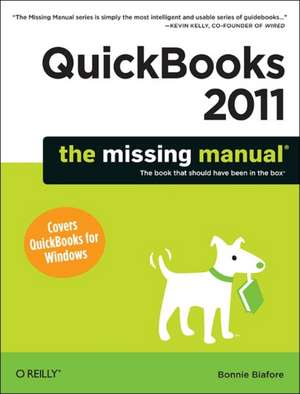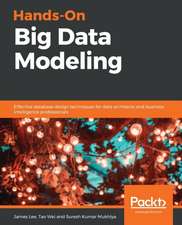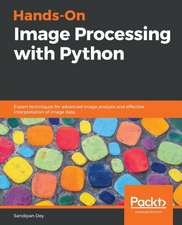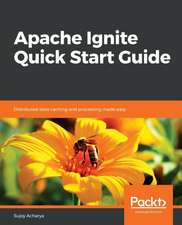QuickBooks 2011 – The Missing Manual: Missing Manuals
Autor Bonnie Biaforeen Limba Engleză Paperback – 22 noi 2010
Your bookkeeping workflow will be smoother and faster with QuickBooks 2011 -- but only if you spend more time using the program than figuring out how it works. This Missing Manual puts you in control: You'll not only find out how and when to use specific features, you'll also get basic accounting advice to help you through the learning process.Set up QuickBooks. Arrange files and preferences to suit your company.Manage your business. Track inventory, control spending, run payroll, and handle income.Follow the money. Examine everything from customer invoices to year-end tasks.Find key info quickly. Take advantage of QuickBooks reports, Company Snapshot, and search tools.Streamline your workflow. Set up the Home page and Online Banking Center to meet your needs.Build and monitor budgets. Learn how to keep your company financially fit.Share your financial data. Work with your accountant more efficiently."
Din seria Missing Manuals
- 20%
 Preț: 118.25 lei
Preț: 118.25 lei - 20%
 Preț: 105.39 lei
Preț: 105.39 lei - 20%
 Preț: 106.97 lei
Preț: 106.97 lei - 20%
 Preț: 149.02 lei
Preț: 149.02 lei - 20%
 Preț: 225.08 lei
Preț: 225.08 lei - 20%
![Dreamweaver MX: In the Studio [With DVD]](https://i1.books-express.ro/bs/9780596006310/dreamweaver-mx.jpg) Preț: 205.64 lei
Preț: 205.64 lei - 20%
 Preț: 274.54 lei
Preț: 274.54 lei - 20%
 Preț: 147.07 lei
Preț: 147.07 lei - 20%
 Preț: 126.84 lei
Preț: 126.84 lei - 20%
 Preț: 102.71 lei
Preț: 102.71 lei - 20%
 Preț: 219.47 lei
Preț: 219.47 lei - 20%
 Preț: 205.09 lei
Preț: 205.09 lei - 20%
 Preț: 123.69 lei
Preț: 123.69 lei - 20%
 Preț: 183.23 lei
Preț: 183.23 lei -
 Preț: 119.76 lei
Preț: 119.76 lei - 20%
 Preț: 252.84 lei
Preț: 252.84 lei - 20%
 Preț: 190.67 lei
Preț: 190.67 lei -
 Preț: 116.69 lei
Preț: 116.69 lei -
 Preț: 140.82 lei
Preț: 140.82 lei - 20%
 Preț: 102.22 lei
Preț: 102.22 lei - 20%
 Preț: 306.89 lei
Preț: 306.89 lei - 20%
 Preț: 273.77 lei
Preț: 273.77 lei - 20%
 Preț: 242.10 lei
Preț: 242.10 lei - 20%
 Preț: 222.48 lei
Preț: 222.48 lei - 20%
 Preț: 226.55 lei
Preț: 226.55 lei - 20%
 Preț: 196.12 lei
Preț: 196.12 lei - 20%
 Preț: 222.26 lei
Preț: 222.26 lei - 20%
 Preț: 269.28 lei
Preț: 269.28 lei - 20%
 Preț: 132.65 lei
Preț: 132.65 lei - 20%
 Preț: 102.92 lei
Preț: 102.92 lei - 20%
 Preț: 163.64 lei
Preț: 163.64 lei - 20%
 Preț: 210.70 lei
Preț: 210.70 lei - 20%
 Preț: 165.20 lei
Preț: 165.20 lei - 20%
 Preț: 217.78 lei
Preț: 217.78 lei - 20%
 Preț: 182.10 lei
Preț: 182.10 lei - 20%
 Preț: 104.85 lei
Preț: 104.85 lei - 20%
 Preț: 153.05 lei
Preț: 153.05 lei - 20%
 Preț: 128.96 lei
Preț: 128.96 lei - 20%
 Preț: 143.58 lei
Preț: 143.58 lei - 20%
 Preț: 160.74 lei
Preț: 160.74 lei - 20%
 Preț: 121.40 lei
Preț: 121.40 lei - 20%
 Preț: 302.62 lei
Preț: 302.62 lei
Preț: 165.39 lei
Preț vechi: 206.73 lei
-20% Nou
31.66€ • 34.40$ • 26.61£
Carte disponibilă
Livrare economică 31 martie-14 aprilie
Specificații
ISBN-10: 1449392458
Pagini: 720
Dimensiuni: 178 x 230 x 39 mm
Greutate: 1.13 kg
Editura: O'Reilly
Seria Missing Manuals
Descriere
Cuprins
About the Author;
About the Creative Team;
Acknowledgments;
Introduction;
What's New in QuickBooks 2011;
When QuickBooks May Not Be the Answer;
Choosing the Right Edition of QuickBooks;
Accounting Basics-The Important Stuff;
About This Book;
About the Outline;
The Very Basics;
About¿These¿Arrows;
About MissingManuals.com;
Part I: Getting Started;
Chapter 1: Creating a Company File;
1.1 Opening QuickBooks;
1.2 Before You Create Your Company File;
1.3 About the EasyStep Interview;
1.4 Starting the EasyStep Interview;
1.5 Modifying Company Info;
1.6 What's Next?;
1.7 Opening an Existing Company File;
1.8 Converting from Another Program to QuickBooks;
Chapter 2: Getting Around in QuickBooks;
2.1 The QuickBooks Home Page;
2.2 The Company Snapshot;
2.3 Using Menus and the Icon Bar;
2.4 Switching Between Open Windows;
Chapter 3: Setting Up a Chart of Accounts;
3.1 Acquiring a Chart of Accounts;
3.2 Naming and Numbering Accounts;
3.3 Creating Accounts and Subaccounts;
3.4 Modifying Accounts;
3.5 Hiding and Deleting Accounts;
3.6 Merging Accounts;
Chapter 4: Setting Up Customers and Jobs;
4.1 Creating Customers in QuickBooks;
4.2 Customer Data Entry Shortcuts;
4.3 Creating Jobs in QuickBooks;
4.4 Modifying Customer and Job Information;
4.5 Categorizing Customers and Jobs;
4.6 Adding Notes About Customers;
4.7 Merging Customer Records;
4.8 Hiding and Deleting Customers;
Chapter 5: Setting Up Invoice Items;
5.1 What Items Do;
5.2 When You Don't Need Items;
5.3 Should You Track Inventory with Items?;
5.4 Planning Your Items;
5.5 Creating Items;
5.6 Service Items;
5.7 Product Items;
5.8 Other Types of Items;
5.9 Setting Up Sales Tax;
5.10 Modifying Items;
5.11 Hiding and Deleting Items;
Chapter 6: Setting Up Other QuickBooks Lists;
6.1 The Vendor List;
6.2 Categorizing with Classes;
6.3 Price Levels;
6.4 Customer and Vendor Profile Lists;
6.5 Fixed Asset Items;
6.6 Creating and Editing List Entries;
6.7 Merging List Entries;
6.8 Hiding and Deleting List Entries;
6.9 Sorting Lists;
6.10 Printing Lists;
Chapter 7: Managing QuickBooks Files;
7.1 Switching Between Multi- and Single-User Mode;
7.2 Backing Up Files;
7.3 Restoring Backups;
7.4 Sending Company Files to Others;
7.5 Verifying Your QuickBooks Data;
7.6 Cleaning Up Data;
7.7 Cleaning Up After Deleting Files;
Part II: Bookkeeping;
Chapter 8: Tracking Time and Mileage;
8.1 Setting Up Time Tracking;
8.2 Entering Time in QuickBooks;
8.3 Running Time Reports;
8.4 Tracking Mileage;
8.5 Generating Mileage Reports;
Chapter 9: Paying for Expenses;
9.1 When to Pay Expenses;
9.2 Entering Bills;
9.3 Automating Recurring Bills;
9.4 Purchasing Inventory;
9.5 Handling Reimbursable Expenses;
9.6 Paying Your Bills;
9.7 Producing Checks;
9.8 Writing Checks Without Entering Bills;
9.9 Paying with Cash;
9.10 Paying with Credit Cards;
9.11 Recording Vendor Refunds and Credits;
9.12 Running Expense-Related Reports;
9.13 Paying Sales Tax;
Chapter 10: Invoicing;
10.1 Choosing the Right Type of Form;
10.2 Sales Forms and Accounts;
10.3 Creating Invoices;
10.4 Creating Batch Invoices;
10.5 Invoicing for Billable Time and Costs;
10.6 Invoicing for Backordered Products;
10.7 Estimating Jobs;
10.8 Creating Progress Invoices;
10.9 Handling Refunds and Credits;
10.10 Editing Invoices;
10.11 Voiding and Deleting Invoices;
Chapter 11: Producing Statements;
11.1 Generating Statements;
Chapter 12: Transaction Timesavers;
12.1 Printing Sales Forms;
12.2 Emailing Sales Forms;
12.3 Memorized Transactions;
12.4 Finding Transactions;
Chapter 13: Managing Accounts Receivable;
13.1 Receivables Aging;
13.2 Receiving Payments for Invoiced Income;
13.3 Applying Credits to Invoices;
13.4 Discounting for Early Payment;
13.5 Deposits, Down Payments, and Retainers;
13.6 Applying Finance Charges;
13.7 Cash Sales;
13.8 Making Deposits;
Chapter 14: Doing Payroll;
14.1 Paying Yourself;
14.2 Doing Payroll Yourself;
14.3 Adding Payroll Transactions from an Outside Service;
14.4 Choosing a Payroll Service;
14.5 Applying for a Payroll Service;
14.6 Setting Up Payroll;
14.7 Entering Historical Payroll;
14.8 Running Payroll;
14.9 Paying Payroll Taxes;
14.10 Preparing Payroll Tax Forms;
Chapter 15: Bank Accounts, Credit Cards, and Petty Cash;
15.1 Entering Transactions in an Account Register;
15.2 Handling Bounced Checks;
15.3 Transferring Funds;
15.4 Reconciling Accounts;
15.5 Managing Loans;
15.6 Tracking Petty Cash;
Chapter 16: Making Journal Entries;
16.1 Balancing Debit and Credit Amounts;
16.2 Some Reasons to Use Journal Entries;
16.3 Creating General Journal Entries;
16.4 Checking General Journal Entries;
16.5 Reclassifications and Corrections;
16.6 Recording Depreciation with Journal Entries;
16.7 Recording Owners' Contributions;
Chapter 17: Generating Financial Statements;
17.1 The Profit & Loss Report;
17.2 The Balance Sheet;
17.3 The Statement of Cash Flows;
17.4 Other Helpful Financial Reports;
Chapter 18: Performing End-of-Year Tasks;
18.1 Checking for Problems;
18.2 Viewing Your Trial Balance;
18.3 Generating Year-End Financial Reports;
18.4 Generating Tax Reports;
18.5 Sharing a Company File with Your Accountant;
18.6 1099s;
18.7 Closing the Books for the Year;
Part III: Managing Your Business;
Chapter 19: Managing Inventory;
19.1 The QuickBooks Inventory Process;
19.2 Running Inventory Reports;
19.3 Performing a Physical Inventory;
19.4 Adjusting Inventory in QuickBooks;
Chapter 20: Budgeting and Planning;
20.1 Types of Budgets;
20.2 Ways to Build Budgets;
20.3 Creating Budgets in QuickBooks;
20.4 Filling in Budget Values;
20.5 Creating Additional Customer:Job or Class Budgets;
20.6 Copying Budgets and Creating What-if Budgets;
20.7 Running Budget Reports;
Chapter 21: Working with QuickBooks Reports;
21.1 Finding the Right Reports;
21.2 Running Reports;
21.3 Printing and Saving Reports;
21.4 Customizing Reports;
21.5 Memorizing Reports;
21.6 Swapping Reports Between Company Files;
Part IV: Quickbooks Power;
Chapter 22: Online Banking Services;
22.1 Setting Up Your Internet Connection;
22.2 Setting Up Your Accounts for Online Services;
22.3 An Intro to Exchanging Data with Your Bank;
22.4 Online Banking Using Side-by-side Mode;
22.5 Online Banking Using Register Mode;
Chapter 23: Configuring Preferences to Fit Your Company;
23.1 An Introduction to Preferences;
23.2 Accounting;
23.3 Bills;
23.4 Checking;
23.5 Desktop View;
23.6 Finance Charge;
23.7 General;
23.8 Integrated Applications;
23.9 Items & Inventory;
23.10 Jobs & Estimates;
23.11 Multiple Currencies;
23.12 Payments;
23.13 Payroll & Employees;
23.14 Reminders;
23.15 Reports and Graphs;
23.16 Sales & Customers;
23.17 Sales Tax;
23.18 Search;
23.19 Send Forms;
23.20 Spelling;
23.21 Tax: 1099;
23.22 Time & Expenses;
Chapter 24: Integrating QuickBooks with Other Programs;
24.1 Mail Merge to a Word Document;
24.2 Synchronizing Contacts;
24.3 Setting Up an Integrated Application;
24.4 Exporting QuickBooks Data;
24.5 Importing Data from Other Programs;
Chapter 25: Customizing QuickBooks;
25.1 Customizing the Desktop;
25.2 Customizing the Home Page;
25.3 Fast Access to Favorite Commands;
25.4 Customizing the Company Snapshot;
25.5 Customizing Forms;
25.6 Managing Templates;
Chapter 26: Keeping Your QuickBooks Data Secure;
26.1 Setting Up the Administrator;
26.2 Creating QuickBooks Users;
26.3 Restricting Access to Features and Data;
26.4 Audit Trails;
Part V: Appendixes;
Installing QuickBooks;
Before You Install;
Installing QuickBooks;
Registering QuickBooks;
Setting Up QuickBooks on a Network;
Where to Store Your Company Files;
Help, Support, and Other Resources;
QuickBooks Help;
Live Community;
Other Kinds of Help;
Other Help Resources;
QuickBooks Training;
Colophon;















